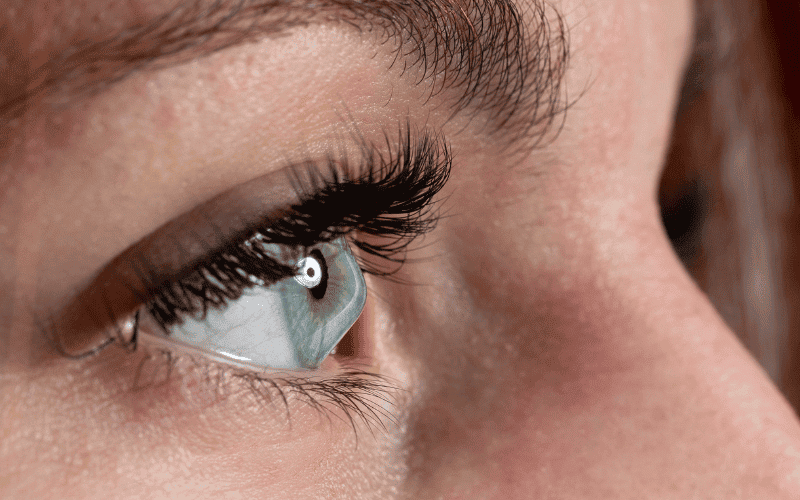Millions of people worldwide suffer with diabetes, a chronic illness that negatively impacts general health and wellbeing. One critical aspect often overlooked is how diabetes can harm your vision. Understanding and managing diabetic eye care is essential since high blood sugar levels have the potential to develop major difficulties with the eyes over time.
This guide aims to educate you about the connection between diabetes and vision issues, highlight symptoms to watch for, and provide tips on diagnosis, management, and preventive measures to maintain eye health.
Understanding Diabetes and Vision
Diabetes is characterized by high blood sugar levels due to the body’s inability to produce or use insulin effectively. There are two primary types: Type 1, in which the body fails to manufacture insulin, and Type 2, in which improper insulin utilization occurs. Both types can lead to complications in the eyes.
Diabetes damages blood vessels in the retina, the part of the eye that is sensitive to light at the rear. Diabetic retinopathy can result from leakage, swelling, or closure of these arteries due to elevated blood sugar levels. This condition can progress to diabetic macular edema, where fluid accumulates in the macula, impairing central vision.
Additionally, diabetes increases the risk of developing cataracts, which cloud the lens, and glaucoma, which damages the optic nerve. These conditions can significantly impact your vision if not managed properly.
Symptoms of Diabetic Eye Conditions
Early Warning Signs:
- Blurry Vision: Often a result of fluctuating blood sugar levels.
- Floaters: Small, shadowy spots or threads that drift through your field of vision.
- Dark Spots: Areas where vision is diminished or obstructed.
Progressive Symptoms:
- Vision Loss: Gradual or sudden loss of vision, especially central vision.
- Difficulty Seeing at Night: Struggling with low-light conditions or night driving.
- Color Distortion: Colors may appear washed out or altered, affecting daily activities.
These symptoms may indicate serious eye conditions related to diabetes, so it is crucial to seek professional evaluation as soon as they occur.
Diagnosis and Monitoring
Regular Eye Exams:
Routine eye exams by a professional of diabetic eye care in Atascocita are vital for early detection and prevention of diabetic eye conditions. They help identify changes before they become severe, allowing timely intervention.
Tests and Procedures:
- Retinal Imaging: Captures detailed images of the retina to check for damage.
- Visual Field Tests: Assess your peripheral vision to detect any loss or impairment.
These examinations are crucial for tracking the development of diabetic eye disorders and making required modifications to treatment regimens.
Management and Treatment
Blood Sugar Control:
Sustaining steady blood sugar levels is essential to avoid or delay diabetic eye complications. High blood sugar can cause disorders like diabetic macular edema and diabetic retinopathy by damaging the blood vessels in the retina.
By consistently managing your blood sugar through a balanced diet, regular exercise, and medication, you can reduce the risk of these complications. Maintaining blood glucose levels within the goal range established by your healthcare physician is made easier with regular monitoring.
Effective blood sugar control supports overall health and minimizes the risk of severe vision issues.
Medical Treatments:
If diabetic eye conditions develop, several medical treatments can help manage and treat the issues:
- Laser Therapy: This is a common treatment for diabetic retinopathy. It entails locating and sealing leaky blood vessels in the retina with a laser. Laser therapy can prevent further vision loss and stabilize the condition.
There are two primary categories of laser therapy: focal laser treatment, which targets specific areas of leakage, and panretinal photocoagulation, which treats the peripheral retina to reduce abnormal blood vessel growth.
- Injections: It is possible to inject medications straight into the eye to lessen swelling and irritation. Injections of anti-VEGF (vascular endothelial growth factor) are frequently used to treat diabetic macular edema because they reduce fluid leakage and stop the formation of aberrant blood vessels.
Injections of steroids can also be used to manage fluid buildup and inflammation in the retina.
- Surgery: In severe cases, surgical interventions may be necessary. Vitrectomy is a procedure where the vitreous gel, which may be causing vision problems due to bleeding or scar tissue, is removed and replaced with a clear solution. This can lessen additional damage and aid in eyesight restoration.
Lifestyle Changes:
Making good lifestyle choices is important for managing diabetes and maintaining eye health:
- Diet: Not only does a well-rounded diet full of fruits, vegetables, whole grains, and lean meats support overall health, but it also aids with blood sugar regulation. Food high in antioxidants, such as leafy greens and berries, may be particularly beneficial for eye health.
Lowering consumption of processed carbs and sugary meals contributes to stable blood glucose levels.
- Exercise: Frequent exercise enhances insulin sensitivity, lowers blood sugar, and helps maintain weight. Try to get in at least 150 minutes a week of moderate exercise, such cycling, swimming, or brisk walking. Exercise also promotes good circulation, which benefits eye health.
- Other Adjustments: Managing stress, avoiding smoking, and limiting alcohol consumption are additional lifestyle factors that support diabetes management and eye health. Regular check-ups with your healthcare provider ensure that any emerging issues are addressed promptly, helping to prevent serious complications.
Incorporating these management strategies and treatments can greatly enhance your ability to maintain healthy vision despite having diabetes.
Preventive Measures
Daily Care Tips:
- Regular Monitoring: Keep track of blood sugar levels and adhere to your treatment plan.
- Manage Stress: High stress can affect blood sugar levels, impacting eye health.
- Healthy Lifestyle: A nutritious diet and regular exercise help control diabetes and support eye health.
Protective Eyewear:
Using protective eyewear, such as sunglasses with UV protection, can shield your eyes from harmful rays and reduce strain.
When to See a Specialist?
Recognizing Serious Symptoms: If you experience a sudden change in vision, severe eye pain, or worsening symptoms, seek immediate medical attention. These could be signs of serious complications requiring urgent treatment.
Finding an Eye Specialist: Choose an ophthalmologist or optometrist with experience in diabetic eye care. Look for recommendations, check credentials, and ensure they are familiar with the latest treatments for diabetic eye conditions.
Diabetic eye care is crucial for preserving vision and maintaining quality of life. By understanding how diabetes affects your eyes and taking proactive steps in managing your condition, you can help prevent serious eye issues.
Regular eye exams, effective blood sugar management, and lifestyle adjustments are key to safeguarding your vision. Schedule your eye exam today and consult with healthcare professionals to stay on top of your eye health.


